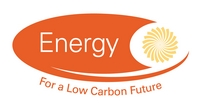Projects
Projects: Custom Search |
||
| Reference Number | EP/W007975/1 | |
| Title | All-Evaporated Triple-Junction Perovskite Photovoltaic Devices | |
| Status | Completed | |
| Energy Categories | Renewable Energy Sources (Solar Energy, Photovoltaics) 100%; | |
| Research Types | Basic and strategic applied research 100% | |
| Science and Technology Fields | PHYSICAL SCIENCES AND MATHEMATICS (Chemistry) 20%; PHYSICAL SCIENCES AND MATHEMATICS (Metallurgy and Materials) 30%; ENGINEERING AND TECHNOLOGY (Electrical and Electronic Engineering) 20%; ENGINEERING AND TECHNOLOGY (Chemical Engineering) 25%; ENGINEERING AND TECHNOLOGY (Mechanical, Aeronautical and Manufacturing Engineering) 5%; |
|
| UKERC Cross Cutting Characterisation | Not Cross-cutting 100% | |
| Principal Investigator |
Dr JB Patel Oxford Physics University of Oxford |
|
| Award Type | Standard | |
| Funding Source | EPSRC | |
| Start Date | 01 April 2022 | |
| End Date | 31 August 2023 | |
| Duration | 17 months | |
| Total Grant Value | £564,332 | |
| Industrial Sectors | Energy | |
| Region | South East | |
| Programme | Energy : Energy | |
| Investigators | Principal Investigator | Dr JB Patel , Oxford Physics, University of Oxford (100.000%) |
| Web Site | ||
| Objectives | ||
| Abstract | With the advancement of technology, unmanned aerial vehicles (UAV) and satellites have become widely accessible for a variety of applications, such as logistics, agriculture, healthcare, military, and scientific endeavours. UAVs currently rely on battery technology to power onboard computers and global positioning satellite systems for long- and short-range flights. For example, the recent investment of 500 million by the UK government in the British satellite company, OneWeb, indicates a significant push towards developing low-cost satellites with novel communications technologies.To meet the required specifications for different purposes, UAVs and satellites increasingly need cost-effective novel sources of power to maintain and extend the running time of ever-increasing auxiliary components and recharge energy storage systems. High power-to-weight photovoltaic devices can meet the needs of these new classes of electronic devices. Metal halide perovskite solar cells have now achieved power conversion efficiencies (PCE) of 25.5%, making them the leading emerging thin film photovoltaic material. Unlike many other emerging photovoltaic materials, high quality perovskite films of a wide range of bandgaps can be fabricated at low temperature on a variety of substrates. The aim of this research project is to pioneer a 30% PCE triple-junction perovskite solar cell with a high power-to-weight ratio. The current limitations in developing perovskite multi-junction photovoltaics are predominantly based on the limitations of solution processing. Physical vapour deposition (PVD), specifically thermal evaporation, is a dry process, which produces uniform perovskite films and does not require solvents, is scalable and is widely used in industry to fabricate a variety of large-scale electronics.This EPSRC Postdoctoral Fellowship proposal sets out a plan to develop an all-evaporated 30% triple-junction perovskite photovoltaic device. Initially I will develop each subcell in a research PVD chamber and find the ideal evaporation rates to create a high-quality perovskite thin film and charge transport layers. I will then transfer these parameters to the new National Thin Film Cluster Facility for Advanced Functional Materials, which is hosted by Oxford Physics, where I will be able to fabricate each subcell, and combine them, in vacuum, to create a triple junction perovskite solar cell. Whilst developing the perovskite thin films, I will carefully monitor and elucidate the crystal growth mechanism of perovskite thin films with varying compositions and deliver a holistic blueprint on requirements to evaporate perovskite thin films of outstanding optoelectronic quality. Three subcells will be developed, with each subcell fabricated using only solvent-free deposition techniques, such as PVD, atomic layer deposition and sputtering and will compromise a p-i-n heterojunction architecture. Each subcell will then be electrically connected with a transparent conductiveoxide recombination layer at the National Thin Film Cluster Facility for Advanced Functional Materials to form the final completed device. The triple-junction devices will be encapsulated using vapour deposition with an industrial encapsulant material used to protect microchips and electronics. Finally, a series of device stability experiments will be undertaken to determine effect of simulated rain, light, temperature, and chemical exposure on the device. | |
| Data | No related datasets |
|
| Projects | No related projects |
|
| Publications | No related publications |
|
| Added to Database | 27/04/22 | |



